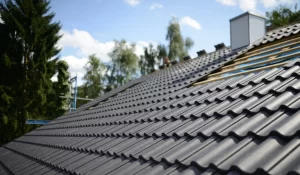The Benefits of a Rooftop Garden

Plantings on the roof of a building provide numerous benefits. These include aesthetic appeal, hydrological benefits, food, temperature control, and architectural enhancement. They can also provide important habitats and corridors for wildlife. Some plants also provide therapeutic benefits and are beneficial for human health. Roof gardens are also environmentally beneficial and can help reduce air pollution.
You can plant a variety of plants on your roof, including fruit, vegetables, and herbs. Trees are another good choice for a rooftop garden. Deciduous trees provide shade during the summer, and their leaves add beauty to the space. Meyer lemon trees are particularly beautiful, and are easily grown in containers. Flowers are also a great addition to any roof garden.
In addition to the benefits of plant life, rooftop gardens also provide the environment with an additional benefit: natural light. High winds may cause plant leaves and stems to sway. They may also uproot young plants. They can also damage lightweight containers. Constant wind can also cause plants to wilt. The constant movement of high winds can also cause damage to non-stationary features, including lighting and irrigation.
Roof gardens can be extremely useful for residents of buildings with limited space. Not only can they be aesthetically pleasing, but they can also provide useful environments for eating, socializing, relaxing, and recreation. For this reason, they should be given due consideration when planning your garden. The next time you visit a building with a roof, consider a roof garden as an opportunity to add value to your home.
In the past, rooftop gardens have been a popular way to address overcrowding and the need for green spaces. They also provided much needed fresh air for the working class. For instance, a rooftop garden can be part of a museum, hospital deck, or library. For many, a roof garden can even double as a recreational space for the entire building.
A rooftop garden can also be beneficial for the patients and the staff of a hospital. Green vegetation provides a relaxing environment for patients, and green views have been shown to reduce the incidence of illness. Furthermore, they are a great way to get fresh air and relieve stress. However, be sure to wash any fruits or vegetables before eating.
Several organizations in Manhattan have added rooftop gardens to their buildings. One is Gotham Greens, which opened a greenhouse in 2014 and produces over 200,000 pounds of produce a year. Its produce is sold at Whole Foods and other grocery stores in the city. The greenhouse is closed to the public, but the rooftop garden is open to the public.
Green roofs make cities more attractive, increase biodiversity, and reduce stormwater runoff. They can improve building efficiency and help reduce urban heat islands. A rooftop garden has similar benefits, but may not be as effective at capturing stormwater or insulating a building as a green roof.






